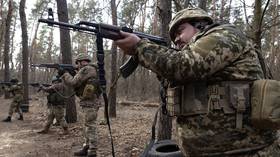Russian central bank explains ruble’s slide

The recent weakening of the Russian ruble is attributable to the fall in global oil prices, according to Aleksey Zabotkin, Deputy Chairman of the Central Bank of Russia, who was cited by business daily RBK on Monday.
Volatility in the Russian foreign exchange market has increased sharply since the beginning of December, with the ruble falling to a more-than-eight-month low against the US dollar last week. The Russian currency, however, started recovering on Friday and began the week at around 68.2 rubles to the dollar and 72.4 against the euro. Trading data shows that, despite the decline, the ruble is still up on the year, trading 10% higher than it did in early January, prior to the start of Russia’s military operation in Ukraine and the ensuing Western sanctions.
“There is a deterioration in external conditions, a decline in oil prices. This is a weighty enough reason for the exchange rate to weaken somewhat,” Zabotkin explained. He pointed out, however, that the rate is still “fluctuating in the range that has been observed since about the end of May this year.”
According to the deputy chairman, the observed weakening of the ruble will contribute to a rise in prices. He noted that every 10% movement in the exchange rate generally adds about 0.5%-0.6% to inflation. “But at the same time, it should be mentioned that these 0.5%-0.6% are not realized instantly, but are stretched over time for six to twelve months,” he said.
“The disinflationary contribution of the strengthening of the ruble, which occurred in the second half of spring and summer, has ultimately been exhausted by now,” Zabotkin added. The regulator does not plan to tighten any restrictions on the capital account, he stressed.
While a weakening of the Russian currency to the end of 2022 had been predicted by many analysts, some experts believe it will continue to drop in the months to come.
The projections come as the price of benchmark Brent oil fell from almost $90 per barrel to about $84, since the beginning of December. The average price for Russian Urals oil, which, after the introduction of a series of sanctions, is sold at a discount, amounted to $57.49 per barrel in December, according to Ministry of Finance estimates. A month earlier, the price was $71.1 a barrel.
The $60-per-barrel ceiling on Russian seaborne crude, devised by the G7 and the EU, came into force on December 5. The measure, along with a ban on EU imports of seaborne Russian flows, is aimed at curbing the Kremlin’s revenues. Russian oil cargoes that are traded above the threshold cannot access some key services from Western companies, including insurance.
For more stories on economy & finance visit RT's business section














